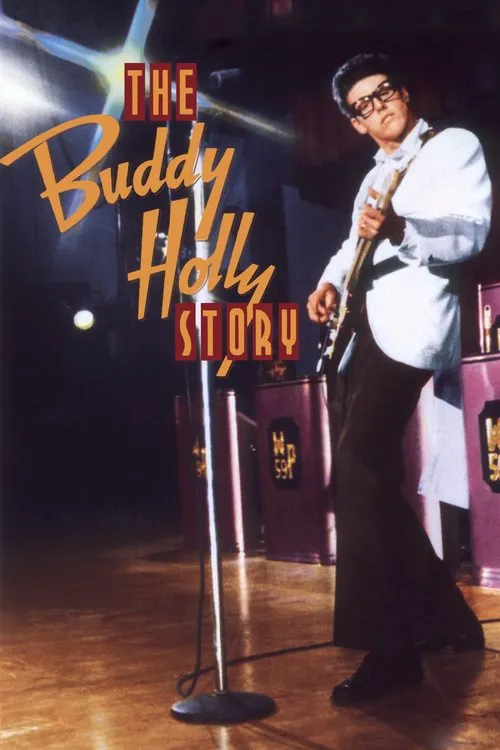The Buddy Holly Story

Plot
The film starts with a young Buddy Holly, an aspiring musician from Lubbock, Texas, trying to make it big in the music industry. With a passion for performing, Buddy forms a band, calling themselves the Crickets, with his closest friends and bandmates, Jerry Allison, Joe B. Mauldin, and Sonny Curtis. They play countless gigs around Lubbock, building a strong local following and earning recognition for their unique blend of country, rockabilly, and rhythm and blues music. Buddy's talents and charisma don't go unnoticed for long. The Crickets start performing at larger venues in the region, eventually catching the attention of Decca Records and being offered a recording contract. This is where the journey truly begins for Buddy and the Crickets. They become the first rock band from Texas to have a nationwide recording contract. With the support of his family and loved ones, Buddy decides to pursue a full-fledged music career, eventually relocating to New York City. However, the transition to a new city, a new recording studio, and the pressures of fame prove to be a challenge for the young musician. They receive an invitation from Owen Bradley, a legendary producer and arranger of Decca Records, to travel to Nashville to record their first single, "That'll Be the Day." However, upon arriving, Buddy and the Crickets realize that Bradley has his own vision for their music, differing significantly from the direction they envisioned. Bradley wants them to adopt a more polished, slick sound, something that will appeal to a broader audience, but will, at the same time, sacrifice their raw, originality and authentic sound. Buddy resists the temptation, sticking with his vision, but eventually concedes, realizing the importance of compromise in achieving success. Their first single eventually becomes a chartbuster, selling millions of copies across the country, catapulting Buddy Holly to stardom. The momentum propels him to play some of the most significant concerts of his life, including a major booking at the historic Apollo Theater in Harlem. However, when Buddy and the Crickets arrive at the Apollo, they're met with a surprise. They're scheduled to play under the mistaken assumption that they're a black band. This raises some eyebrows among local club-goers who have already seen their names listed on the marquee for the date. As a result, some fans, expecting a black band, are initially confused and disoriented. Nevertheless, the band still manages to perform to a packed house, winning over the audience with their infectious energy, charisma, and authentic music. Their breakthrough success with "That'll Be the Day" propels Buddy to pursue a solo music career. He starts making a name for himself in the music industry and earns numerous chart-topping hits in the subsequent years. With hits like "Peggy Sue," "Everyday," and "Oh, Boy!" he eventually finds himself in the midst of a rock 'n' roll revolution, becoming one of the most influential and celebrated musicians in the world. However, on that fateful day, February 3, 1959, disaster strikes as Buddy Holly's life takes a devastating turn. He boards a small plane in Clear Lake, Iowa, to travel to the next town for his scheduled show, alongside other influential musicians including J.P. "The Big Bopper" Richardson, Ritchie Valens, and pilot Roger Peterson. But in a catastrophic tragedy, the plane crashes in a cornfield just outside of Clear Lake, resulting in the tragic death of Buddy, Ritchie, J.P., and Roger Peterson. This heartbreaking event will become immortalized in American music history as "The Day the Music Died."
Reviews
Recommendations




